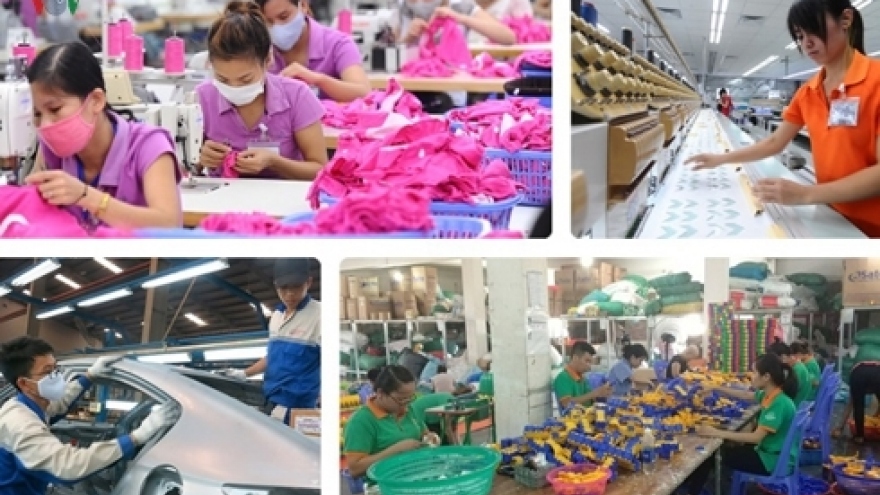Proactive measures taken to promote export to CPTPP markets
The Ministry of Industry and Trade (MoIT) has worked out comprehensive solutions to expand and seek more export markets for Vietnam’s goods, towards fostering the country’s export, especially to member nations of the Comprehensive and Progressive Agreement for Trans-Pacific Partnership (CPTPP).
 |
| Illustrative image (Photo: VNA) |
According to Minister of the MoIT Tran Tuan Anh, the ministry has developed and submitted to the Prime Minister a scheme to handle international trade disputes, accelerate the implementation of key projects, and increase production capacity of sectors, with the aim of contributing to stimulating economic growth.
The scheme is considered as an overall action programme of the Government to implement the CPTPP and affirm Vietnam's integration commitments to bring the most benefits to the national economy, localities and people.
The MoIT’s Export and Import Department said Vietnam’s export turnover to Japan and Canada - the most potential markets within the CPTPP region - has recorded a strong surge in recent times.
Vietnam’s export turnover to Japan in the first quarter of 2019 hit 4.62 billion USD, up 6.68 percent year-on-year. Its main exports include textiles (nearly 900 million USD), means of transport and spare parts (over 630 million USD), machinery and equipment (450 million USD), and seafood (over 306 million USD).
Notably, the export of fertilizer witnessed a sudden growth in the first quarter, reaching 8,126 tonnes worth 3.7 million USD, up 509 percent in volume and 1,158 percent in value compared to the same period last year.
Other exports to Japan seeing strong growth in the first quarter include chemicals (70 percent); animal feed and raw materials (56.8 percent); ore and minerals (52 percent); iron and steel (49 percent); and plastic materials (43 percent).
Economic experts said Vietnam’s exports to Japan have increased rapidly over the past time thanks to the CPTPP agreement. Japan, for the first time, has pledged to completely eliminate import taxes for a large number of Vietnamese farm and aquaculture products.
On the other hand, with the two free trade agreements (FTAs) between Vietnam and Japan, and between ASEAN and Japan, a number of Vietnam’s aquatic exports to Japan are also removed tariff barriers.
Along with Japan, two-way trade between Vietnam and Canada tripled from 1.14 billion USD in 2010 to 3.85 billion USD in 2018, of which Vietnam enjoyed a trade surplus of 2.14 billion USD with this market.
In the first three months of 2019, Vietnam's export to Canada surged 42 percent compared to the same period last year. Its main exports to the country were textiles, footwear, computers, electronic products and components, means of transport and spare parts, seafood, and furniture.
According to Bui Tuan Hoan from the Department of European and American market under the MoIT, with the population of 37 million people, along with 250,000 Vietnamese Canadian people, the North American nation is a potential market for processed food enterprises of Vietnam.
Canada has a fairly open policy on tropical agricultural products with import tariffs of zero percent and no technical barriers, so if Vietnam can overcome challenges related to storage and transportation, the country will have more opportunities to export more fresh fruits to this market, Hoan said.
Vietnamese trade cousellor in Canada Do Thi Thu Huong said with the implementation of the CPTPP, Canadian businesses are more and more interested in the Vietnamese market and want to promote business and investment in areas of infrastructure and information technology, aviation, education, and forestry.
The MoIT said the expansion of export markets is considered a long-term strategy to help Vietnamese enterprises deeply participate in the regional value chain, and improve their production capacity and competitiveness.
To increase export turnover, Minister Anh recommended that businesses pay attention to abiding by regulations on barriers and trade conflicts that may occur, towards making it easier for their products to penetrate into CPTPP member countries.


